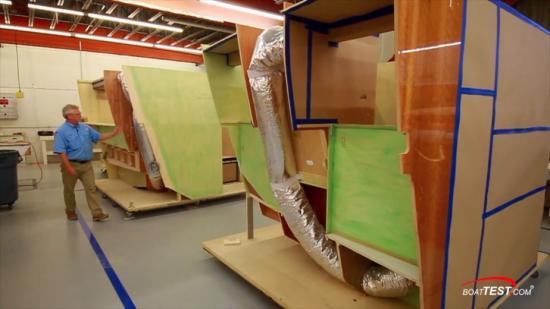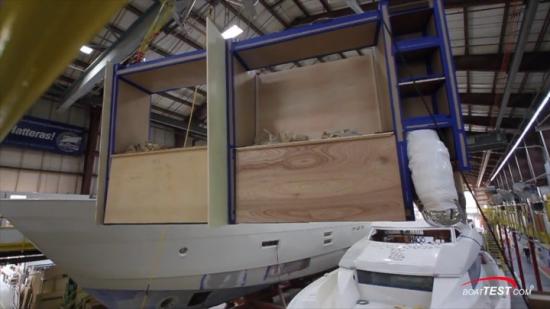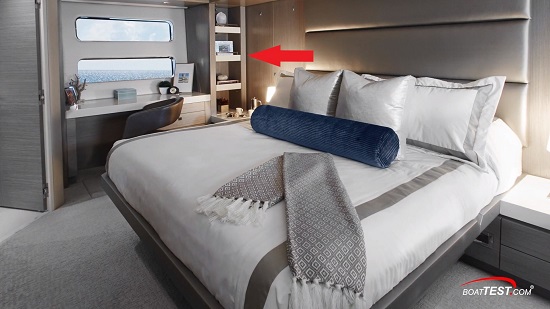Access More Boat Tests
Already have an account? Login
Hatteras Factory - Woodworking
Captain's Report
Introduction
When it comes to fit and finish, Hatteras Yachts are clearly on a premium level. Joinery Is perfect, no defects are found where edges of one piece come together to another, and no filler is needed to correct errors because there simply aren’t any. All of this became evident in our detailed look at how Hatteras maintains the quality of work we’ve come to expect from its interiors.
Attention to Detail
For one thing, Hatteras can control this painstaking attention to detail because all the components are made in house as modules outside the boat. This way, items such as the companion way module for an M75, seen below, allows everything to be properly reinforced to handle sea conditions. Because all sub-structures, wiring, and plumbing is easy to reach, a far better installation is possible.

Then some wire runs can be added, making the entire module in effect plug and play. Seen below is the port stateroom for an M75, and then the installed version showing how the berths will go on either side of the night stand.

Putting it Together
When it comes time to move the components into the boat, that process is called “flying” it in. Sandbags ensure that it’s properly weighted to prevent swinging and keep it level. Then it’s lifted by crane and then “flown” over to the yacht and then lowered in position. All plug-and-play connections are made, and the structure is fiberglassed into the hull structure where it becomes a further support for the rigid hull in egg-crate fashion.

Another example is the starboard side of the master stateroom in an M75 where we see the desk and bookcase for an M75 in the image above. The hull side window will be cut into the aft bulkhead, and then the bottom will be removed to make the desk. Seen below is the finished product.

Types of Wood
The materials even make a difference. We can use marine gray plywood which weighs about 30 lb. (13.61 kg) a sheet, light ply which weighs 20 lb. (9.07 kg), or Nida-core at 10 lb. (4.54 kg) a sheet. Nida-core, however, has a honeycomb structure that requires drilling a hole and then adding a backer block for every screw that needs to be put in. Therefore, Hatteras uses light ply which can be fastened normally but is still lighter.
All the pieces are machine cut and put on a cart to be delivered to the workers for assembly. They follow a pattern that maps out the numbers on each part, and this works from the simple to the more complex.

Observations
Time and again we’ve pointed out this painstaking attention to detail that in a finished Hatteras yacht represents quality that can be seen everywhere. It’s the Hatteras quality that makes the difference. Yes, there’s a price associated with it, but a premium-level yacht commands that increase along with the quality.
Someone once said, “you get what you pay for,” and that statement is never more true than when dealing with yachts in the class of Hatteras. Boats this size can certainly be made a lot cheaper, but they cannot be made much better.


